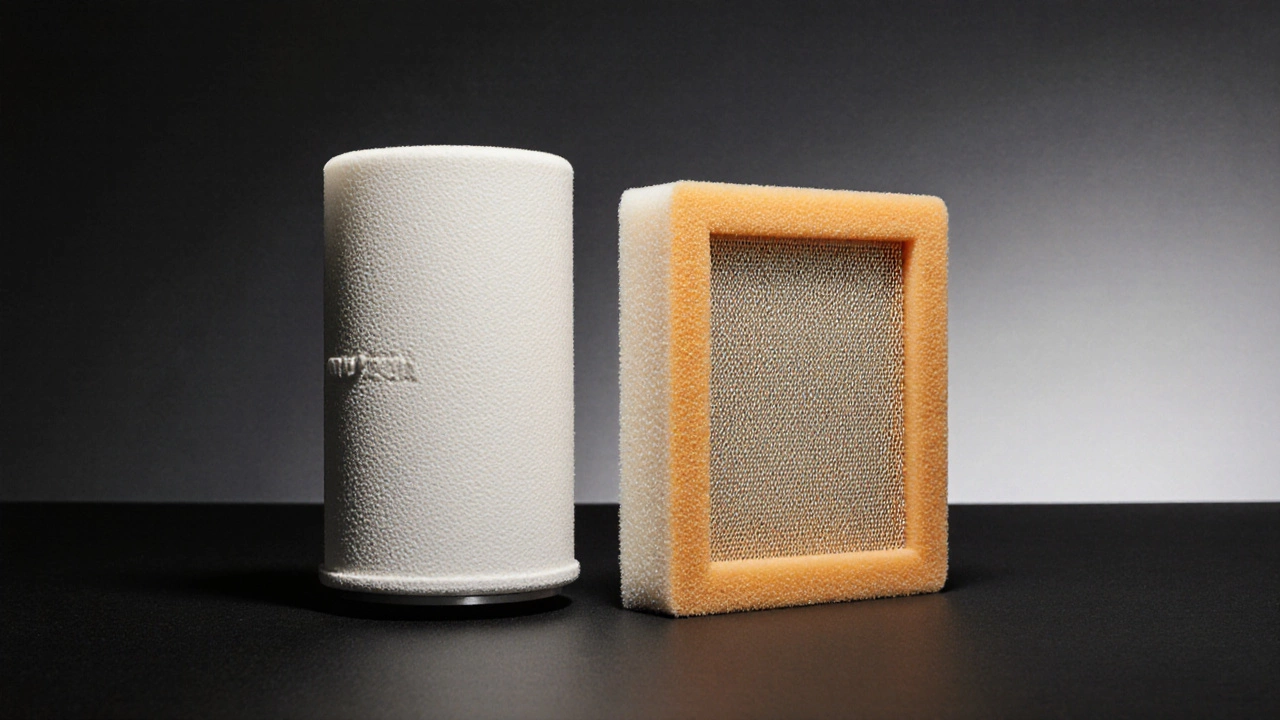Expensive Car Air Filters: Are They Worth the Money?
- Gareth Westbrook
- 13 10 2025 Performance Parts
Explore if pricey high‑flow car air filters deliver real performance, fuel‑economy, and durability benefits, and learn when they’re worth the upgrade.
When working with car air filter upgrade, the process of swapping a stock filter for a higher‑flow or performance unit to improve engine breathing. Also known as air intake upgrade, it can raise horsepower, torque and fuel efficiency when done right. This upgrade car air filter upgrade isn’t just about a new part; it’s about how that part fits into the whole intake system.
A performance air filter, a high‑flow filter that lets more air in while still catching dirt often serves as the first step. More air means the engine can burn fuel more completely, giving you a modest power bump and smoother throttle response. However, the gain only shows up if the filter stays clean, so maintenance becomes part of the equation. In many builds, a cold air intake, a tube that draws cooler, denser air from outside the engine bay works hand‑in‑hand with the upgraded filter, further enhancing airflow and reducing intake temperature.
Choosing between a dry and an oiled air filter, a filter coated with oil to trap finer particles depends on how you drive. Oiled filters excel at keeping dust out, which is great for off‑road or dusty city conditions, but they require periodic cleaning and re‑oil. Dry filters are easier to service and can be rinsed, yet they may let a few more tiny particles through. Both types influence filter lifespan, a key attribute that determines how often you’ll need to replace or service the unit. Typically, a high‑quality performance filter lasts 12‑18 months under normal driving, but aggressive track use can cut that in half.
Beyond the filter itself, you’ll want to check the whole airflow path. A poorly routed intake pipe can negate the benefits of a high‑flow filter, while a restrictive throttle body will choke performance regardless of filter quality. Simple checks—like ensuring the intake hose isn’t kinked and that the air box seal is intact—can preserve the gains you worked for. If you’re after the longest possible lifespan, follow the manufacturer’s cleaning schedule, store the filter in a dry place, and avoid using harsh chemicals that could strip oil from oiled filters.
Below you’ll find a curated list of articles that dive deeper into each of these topics. Whether you’re after a step‑by‑step installation guide, a side‑by‑side comparison of dry vs oiled filters, or tips on extending filter life, the collection covers the practical details you’ll need to make a confident upgrade.

Explore if pricey high‑flow car air filters deliver real performance, fuel‑economy, and durability benefits, and learn when they’re worth the upgrade.